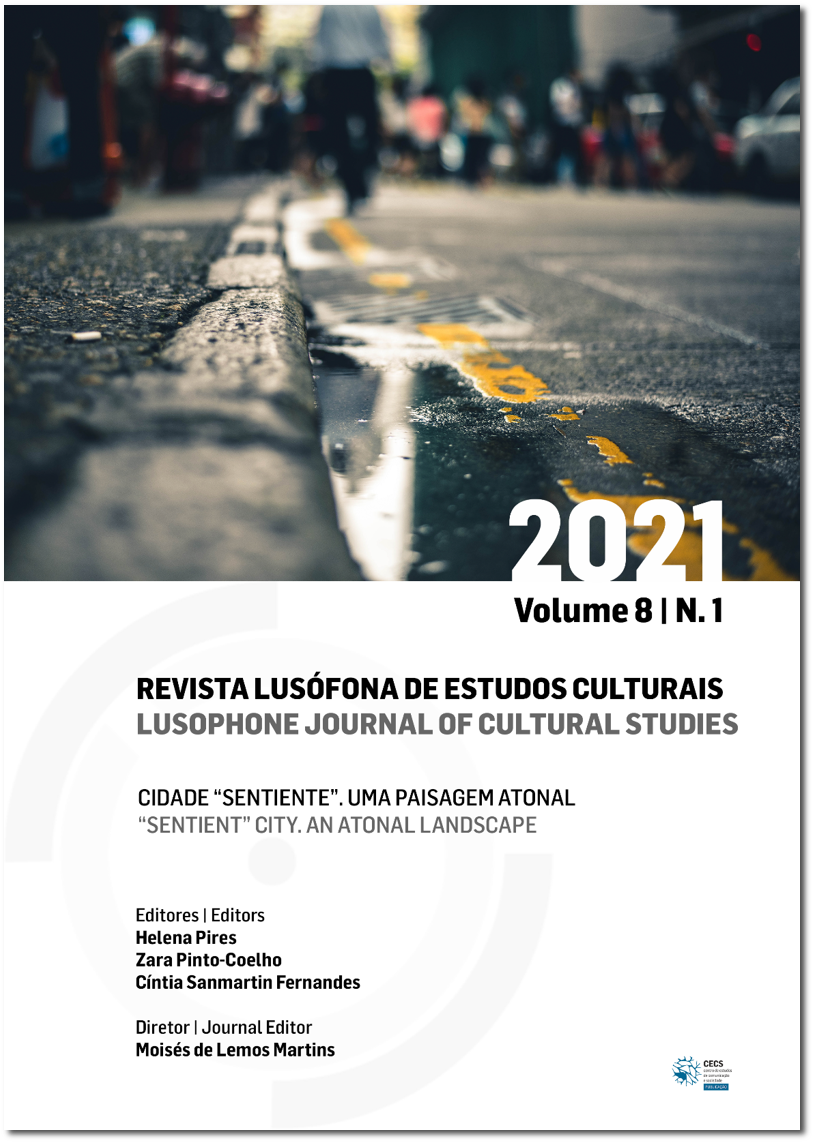Nelson Mandela Square: Spatialities in a Frontier
DOI:
https://doi.org/10.21814/rlec.3217Keywords:
city, frontier, spatialities, translationAbstract
This article presents the partial result of a broader research, carried out in the Lavapiés neighborhood, central Madrid, aimed at apprehending the constitution of its distinct spatialities and the meanings they generate in culture. The object of discussion hereby proposed is Nelson Mandela square, one of the main meeting points of immigrants in the region, in order to verify how the emergence of spatialities based on exchanges and tensions among the different groups spending time at the venue occurs. To this end, the analysis will be based on the ambivalence that characterizes the functioning of the semiotic frontier, as defined by the culture cultural semiotician Iuri Lotman (1996). The research method includes situationist drift and the participant observation. In the square, the presence of two distinct spatialities is noticed: one marked by a distancing resulting in relationships guided by what Richard Sennett (2018/2019) indicates as the “close-stranger” and another one characterized by translational exchanges by which a city is built differently from the one planned by urbanism. Through the discussion, it is also aimed to point out how, through the frontier, it becomes possible to apprehend forms of constitution of the pidgin city (Careri, 2016/2017), which emerges in the midst of relationships marked by unpredictability and error, resulting from the interactions established between different alterities.
Downloads
References
Alemrac. (2018,7 de dezembro). Reactivación plaza Nelson Mandela. https://decide.madrid.es/presupuestos/presupuestos-participativos-2019/proyecto/14208
Careri, F. (2013). Walkskapes. O caminho como prática estética (F. Bonaldo, Trad.). Gustavo Gili. (Trabalho original publicado em 2002)
Careri, F. (2017). Caminhar e parar (A. Bernardini, Trad.). Gustavo Gili. (Trabalho original publicado em 2016)
Debord. G. (2003). Teoria da deriva. In P. B. Jacques (Ed.), Apologia da deriva: Escritos situacionistas sobre a cidade (pp. 87–91). Casa da Palavra.
Fernández, J. (2013). Las políticas de gentrificación en la ciudad neoliberal. Nuevas clases medias, producción cultural y gestión del espacio público. El caso de Lavapiés en el centro histórico de Madrid [Tese de doutoramento, Universidad Complutense de Madrid]. E-Prints Complutense. https://eprints.ucm.es/id/eprint/23816/1/T34970.pdf
Ferrara, L. (2000). Os significados urbanos. Edusp.
Ferrara, L. (2002). Design em espaços. Rosari.
Ferrara, L. (2008). Comunicação. Espaço. Cultura. Annablume.
Ferrara, L. (2018). A comunicação que não vemos. Paulus.
Ingold, T. (2016). Chega de etnografia! A educação da atenção como propósito da antropologia. Educação, 39, 404–411. https://doi.org/10.15448/1981-2582.2016.3.21690
Ingold, T. (2017). Antropologia versus etnografia. Cadernos de Campo, 26, 222–228. https://doi.org/10.11606/issn.2316-9133.v26ilp222-228
Lotman, I. (1996). La semiosfera I. Semiótica de la cultura y del texto. Ediciones Cátedra.
Lotman, I. (1998). La semiosfera II. Semiótica de la cultura, del texto, de la conducta y del espacio. Ediciones Cátedra.
Lotman, I. (2013). The unpredictable workings of culture (B. Baer, Trad.). TLU Press. (Trabalho original publicado em 2010)
Makarychev, A., & Yatsyk, A. (2017). Lotman’s cultural semiotics and the political. Rowman & Littlefield International.
Mezzadra, S., & Neilson, B. (2017). La frontera como método. O la multiplicación del trabajo (V. Hendel, Trad.). Traficantes de sueños. (Trabalho original publicado em 2013)
Osorio, C. (2017). Lavapiés y El Rastro. Temporae.
Rodríguez, A. C. (2015). La crisis a pie de barrio. Los casos de Lavapiés y San Isidro (Madrid) [Dissertação de mestrado, Universidad Complutense de Madrid]. E-Prints Complutense. https://eprints.ucm.es/id/eprint/51691/1/21-2017-03-15- CI17_W_Alba%20Crusellas.pdf
Santos, M. (1994). Técnica, espaço, tempo: Globalização e meio técnico, científico, informacional. Hucitec.
Sanz, A. R. (2010). Inmigración y mercado de trabajo. “Economías inmigrantes” en Lavapiés (Madrid) [Tese de doutoramento, Universidad Complutense de Madrid]. E-Prints Complutense. https://eprints.ucm.es/id/eprint/11412/1/T32358.pdf
Sennett, R. (2019). Construir y habitar. Ética para la ciudad (M. Galmarini, Trad.) Editorial Anagrama. (Trabalho original publicado em 2018)
Smith, N. (2012). La nueva frontera urbana. Ciudad revanchista y gentrificación (V. Hendel, Trad.). Traficantes de sueños. (Trabalho original publicado em 1996)
Trapiello, A. (2018). El Rastro. Ediciones Destino.
Wisnik, J. M. (1989). O som e o sentido. Uma outra história das músicas. Companhia das Letras.
Downloads
Published
How to Cite
Issue
Section
License
Copyright (c) 2021 Revista Lusófona de Estudos Culturais

This work is licensed under a Creative Commons Attribution 4.0 International License.
Authors own the copyright, providing the journal with the right of first publication. The work is licensed under a Creative Commons - Atribuição 4.0 Internacional License.












